

So, you’ve decided to paint your open louvre doors. Louvre doors can be tricky to paint because of the open louvres, so here’s our step by step guide to assist you in the process;
You will need:
1x paint brush (we recommend no bigger than 1”)
Apron
Gloves
Face mask
Paint (Primer-if required and Top Coat)
Your louvre door/s
Sheets/ newspapers
2x trestle tables
Hand block
White Spirit
Clean cloth
Clean, dry brush
Sand paper
Screwdriver (if removing knobs or hinges)
1. The first thing to remember is this is not going to be a ‘quick job’. Painting a louvre door can be a lengthy process so it’s best to set aside at least a few hours to complete the work
2. Prepare the space. Cover areas that you do not want to get paint on. For example use an old sheet or newspaper on the floor.
3. Prepare yourself. Wear an apron and/ or latex gloves. You might also want to wear a mask to protect against splashes to the face and paint fumes.
4. Make sure you have enough paint. It can be really irritating to start a job, get almost to the end to realise you have run out of paint. Also by the time you have obtained more paint, the parts you have already painted will be dry and you then run the risk of the unpainted section of the door looking slightly different to the painted part after painting or getting what we call a ‘tide mark’ where the two painted sections meet.
5. If you are re-painting an old louvre door that has doorknobs or hinges fitted take these off first.
6. If you are re-painting an old door then key the existing painted surface with some sandpaper to create a rough surface for the new paint to bond to.
If you need to prime your door jump to step 7.
If you have purchased a pre-primed door jump to step 12.
7. Clean all the dust and dirt off with a clean brush and wipe down with a cloth and white spirit to remove any greasy residue. Any grease or dust on the surface of the door can prevent proper paint adhesion causing it to flake off later on. Once you have completed this process go to step 16.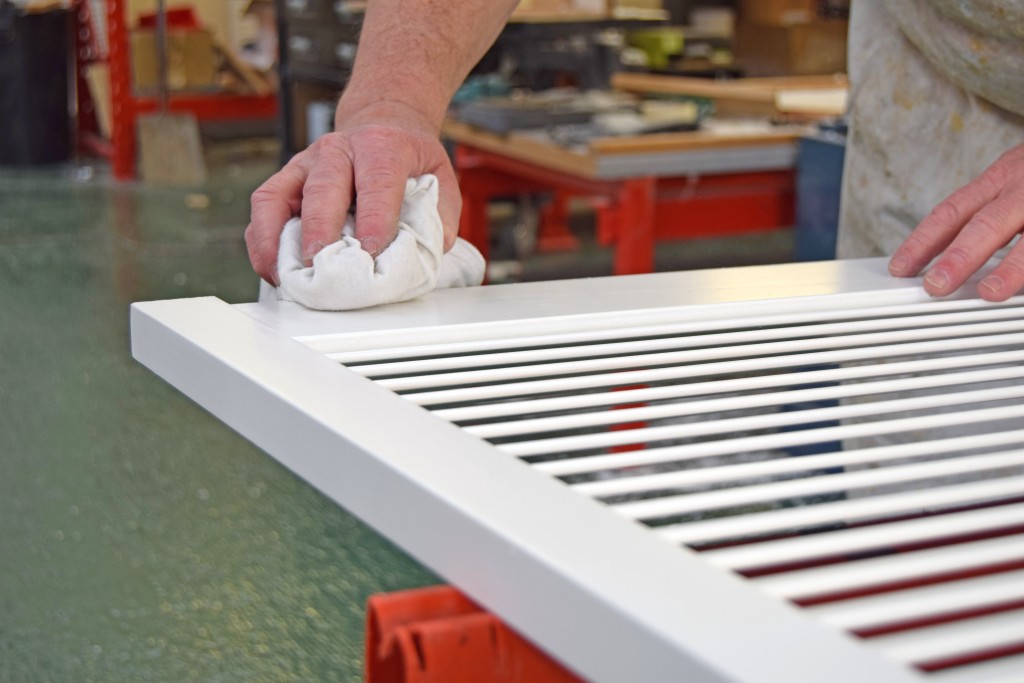
8. If you have not bought a factory white primed louvre door then your first step is to prime your door. Unfinished pine louvre doors always require a primer coat first. The primer coat prepares the wood for the undercoat and top coats. Once dry the primer coat will need to be flatted off or rubbed down to remove irregularities and hairy wood fibres.
9. It is best to paint your louvre door elevated from the floor. Leaning it up against a wall could cause problems with drips as you are painting it. The best way is to use 2 trestle tables and lay the louvre door across them. Because you have a full view of the door from above and underneath you can catch any drips before they dry. If you are limited for space and have to paint the door standing up, ensure you paint from the top down.
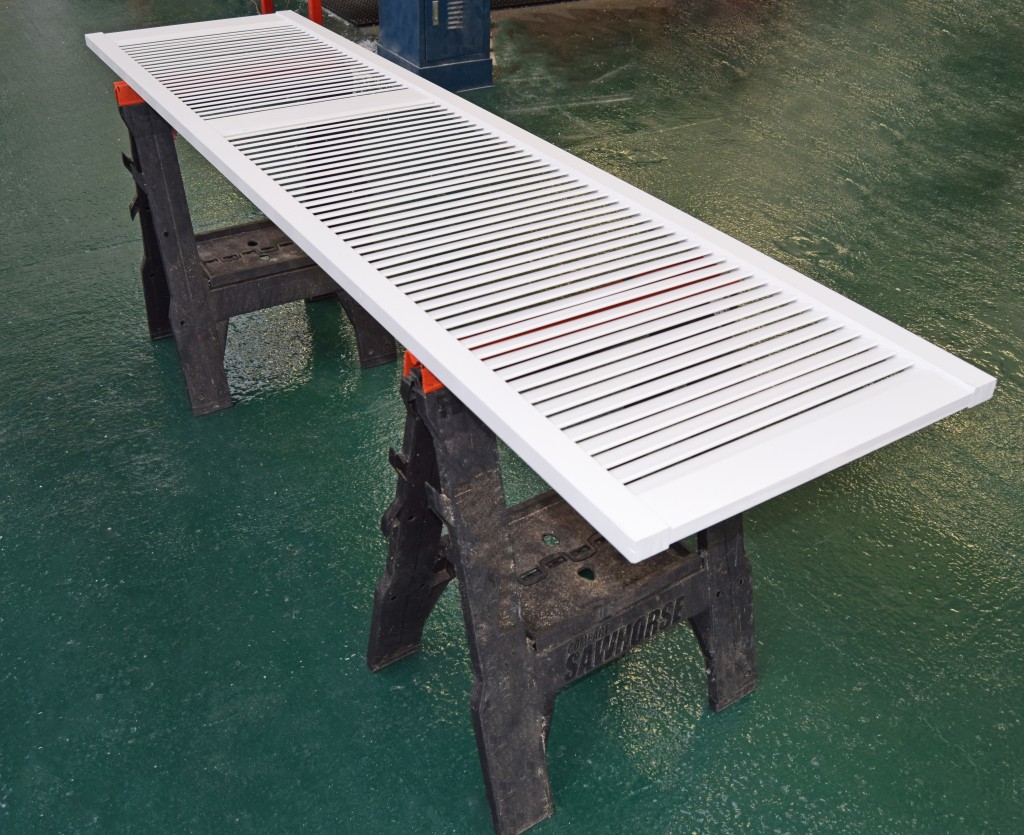
Top Tip: If you do not have trestle tables try using 2 small step ladders or boxes.
10. Paint the back side of the louvre door first. This way any drips that you may have missed that have fallen onto the front of the door can be sanded off (once the door is dry) before you begin painting the front of the door. Once finished leave to dry as per the instructions on the paint tin (this could be 2-4 hours or longer so always read the manufacturers instructions first).
11. When dry repeat the same process on the front of the door.
12. Once you have finished priming the door give the door a light sanding. This removes any wood fibres that the primer will have raised from the wood. Use a clean, dry brush and brush off the dust left from sanding down the primer.
13. Now it’s time to apply your undercoat. An undercoat is used to mask the visible wood grain and provide a smoother finish. As primer is so thin you will still see the wood grain so a thicker undercoat is used to mask this. We recommend a grey undercoat for darker top coats and a white undercoat for lighter colours). Once completed leave to dry.
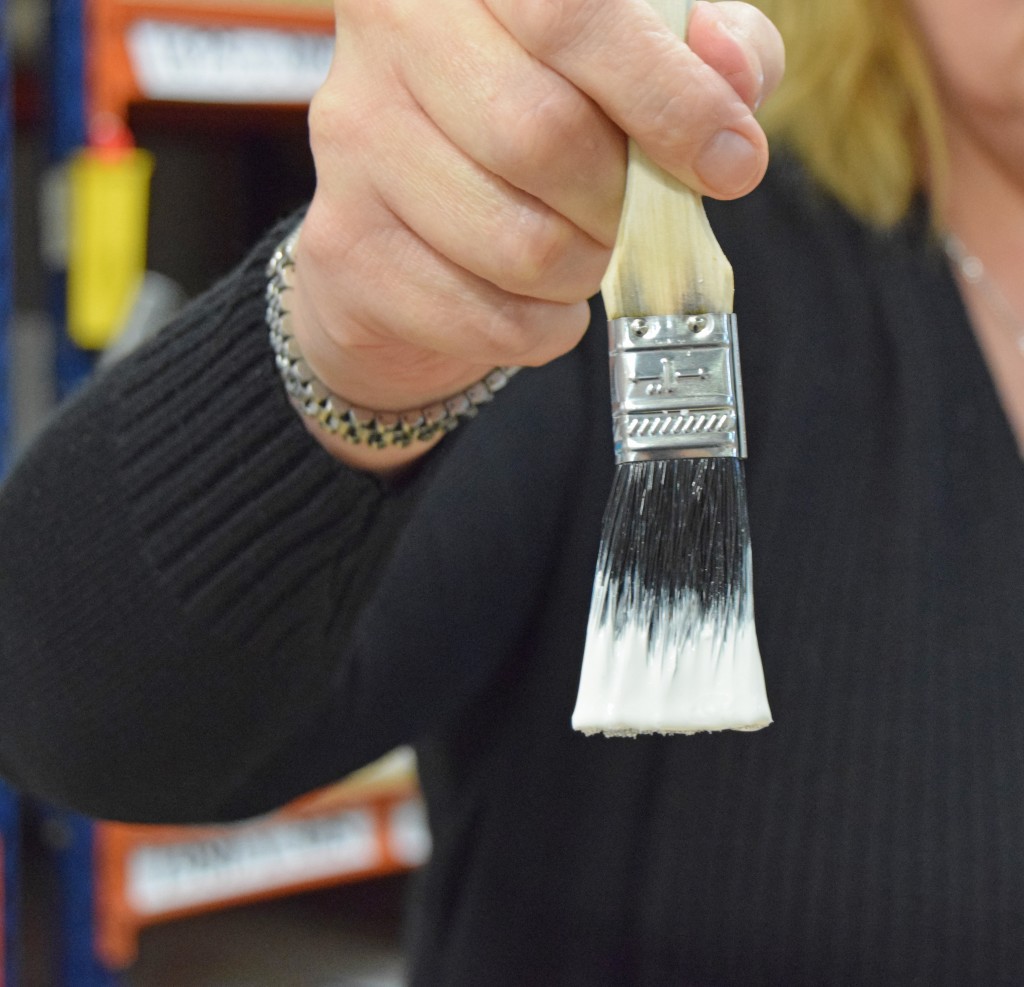
Top tip: Don’t put too much paint on your brush. You only need to cover the tip to centre part of the brush (approx half an inch), anything more means you have too much paint on your brush that could make your job harder. Apply on thinly and evenly.
14. Once the undercoat has dried this will need a light rubbing down with a hand block. You just want to lightly scratch the surface. This gives the top coat something to ‘cling’ onto thus encouraging a longer lasting paint finish.
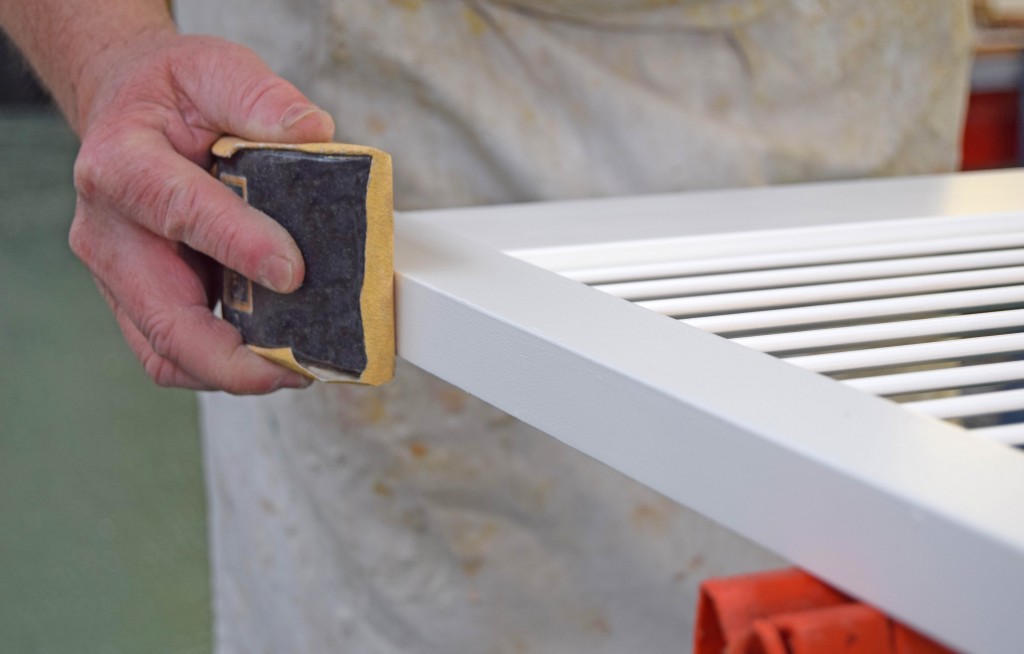
Top Tip: A Hand block is better to use than an electric sander as you can feel the pressure being applied. An electric sander may sand off too much paint.
15. Use a clean, dry brush to brush off any dust and residue.
16. Slightly moisten a cloth with white spirit and wipe the door to remove any small particles. White spirit is used instead of water as this gets rid of any grease on the door that may have been transferred from your hands and it evaporates quickly.
17. Before applying your top coat read the manufacturer’s instructions to see if you need to apply one or two top coats.
18. Paint on your top coat remembering the previous top tip about paint. Don’t apply too much. Leave to dry. If you are applying more than one coat let the first coat dry before applying the second. You will need to lightly scuff the surface before applying the final top coat.
19. Once your door is completely dry inspect your work to ensure there aren’t any small bits you have missed. If you need to, you can touch in any small unpainted areas.
20. If you removed any knobs or hinges these can now be re-attached.
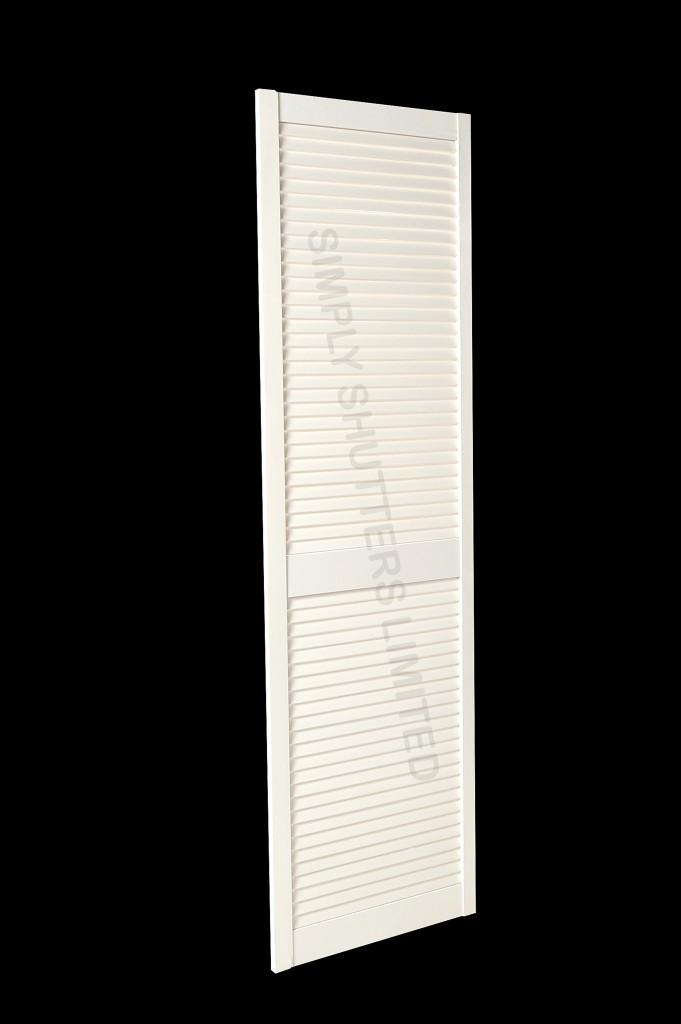
Hey presto, One finished painted louvre door!
We hope you found this step by step guide helpful. However if you just don’t have the time there are some alternatives:
1) Get them spray painted.
2) Pay someone else to paint them for you.
3) Buy a factory primed door so you can cut out stages 6-9.
For Simply Shutters full range of interior louvre doors click here.
